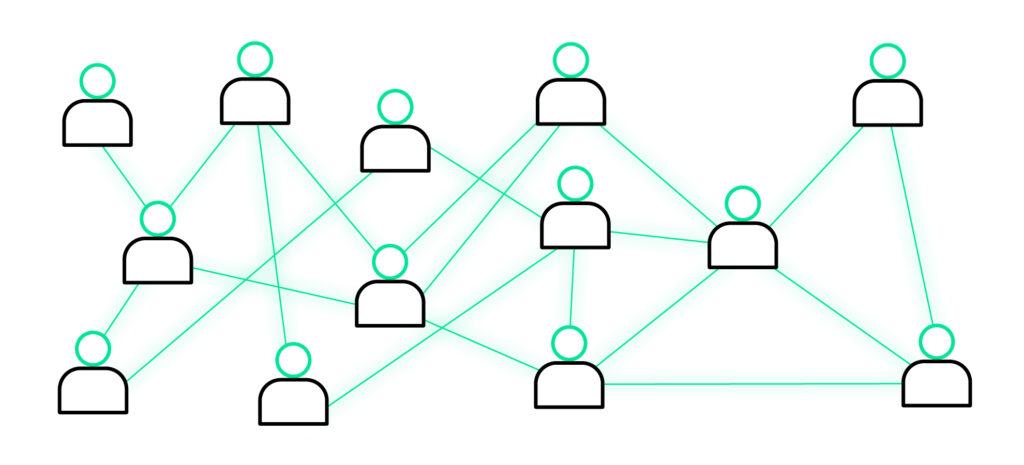Patient recruitment and retention in clinical trials remain some of the greatest challenges in the field of clinical research. Just 47% of ClinOps leaders believe their current enrollment processes are successful, according to Drug Discovery Trends, while Clinical Leader has the average trial dropout rate at a staggering 30%. These figures contribute to a lack of diversity and representation in clinical trials – another major issue for the clinical community, and for our society at large. So how are patients recruited for clinical trials, and what can we do to improve clinical trial recruitment and retention?
Clinical trial recruitment
Outreach
The first step in the clinical trial recruitment process is outreach. Advertising a clinical trial through social media, HCPs, or more traditional channels allows clinical teams to reach out to patent populations, communicate trial specifics, and drive interest. It’s an opportunity to target and appeal to specific patient groups, incentivize participation, and reassure participants of their safety.
This process involves identifying the correct patient population, learning their media habits, and tailoring a message that will resonate with them.
Screening and pre-screening
Before patients can be enrolled in a clinical trial, they must first be screened against predetermined eligibility criteria to ensure they’re a good fit for the study. Potential participants need to be checked to see if they meet your inclusion criteria, while avoiding any exclusion criteria that would make them ineligible for the trial. These criteria can help to narrow the pool of potential patients and trial candidates during pre-screening, after which point those remaining candidates will be invited to an in-person screening, where they might undergo a physical examination and have their medical records checked.
Informed consent
Before a patient can participate in a clinical trial, they must undergo informed consent. The clinical team must educate candidates about the potential risks or any discomfort that may be involved in the trial process, what they can expect to experience, and the benefits of participation. The informed consent process is also an opportunity for patients to raise any concerns, ask questions, and ensure they’re comfortable with trial participation. Clinical teams must also assess whether study participants are competent to make voluntary participation decisions. Without informed consent, a trial cannot go ahead.
How to improve clinical trial recruitment and retention
At every stage of the trial recruitment process, clinical teams are losing potential candidates, making patient retention in clinical trials a struggle. In fact, according to a University of Pennsylvania study, as many as 86% of clinical trials fail to reach their patient recruitment goals. And then there’s a battle to retain those candidates they’ve successfully recruited – that 30% dropout rate we mentioned earlier. There are efficiencies to be found throughout this process, and technology can help to improve trial recruitment and retention by introducing a more precise, equitable, and patient-centric approach.
Identifying trial participants
Not only is it difficult, but current patient retention strategies in clinical trials also fail certain underserved populations. According to the Sidney Kimmel Comprehensive Cancer Center, less than 10% of cancer patients enrolled in clinical trials are racial or ethnic minorities, while according to the BMJ, only around 22% of phase I trial patients are women.
Artificial intelligence is already being used to identify patient populations. According to Forbes, an AI-enhanced trial at Cedars-Sinai identified 16 candidates in one hour, compared to two people in six months via a human-focussed approach. Network analytics, meanwhile, can help clinical teams better understand the relationships within their disease communities – how experts, patients, and sites interact. Network analytics allows teams to identify and subsequently work with patient advocates who wield significant influence over patient populations, aiding trial recruitment and building trust with underserved patient groups.
“AI capabilities, including natural language processing and association rule mining, help extract data to find patients suitable for clinical studies, and can help identify those most likely to complete a trial.” – Icon
Understanding patient needs
Establishing a culture of patient-centricity throughout the trial process reduces stress and pressure on the patient and improves success rates for clinical teams – as this stat from the Economist illustrates.
“87% of patient-centric clinical trials have positive results, vs 68% of traditional trials.” – Economist
Social listening, artificial intelligence, and natural language processing provide a window into the patient experience. There are numerous barriers to trial participation, including health and literacy challenges, logistical and financial hurdles, historical mistrust and marginalization. Understanding which challenges are at play among a particular disease community allows clinical teams to address those barriers, improve trial participation and enhance the patient experience.
Improving site selection
Site access remains a major impediment to clinical trial participation – particularly for more remote or rural populations.
“Patients travel an average of 25.8 miles for clinical trial visits.” – The Oncologist
By better understanding patient populations and locations, clinical teams can select trial sites accordingly, reduce patient burden, and improve trial recruitment and retention. This is another area where network analytics can help, building a heatmap of HCPs and patients to reveal the geographic makeup of a disease community about potential trial sites.
Improving trial access
Even with the best of intentions and the most carefully-selected trial sites, trial participation can still prove challenging for many potential candidates. To maximize trial participation, clinical teams must remove as many potential barriers as possible. Asynchronous virtual engagement platforms enable decentralized clinical trials, where patients can participate remotely from home, on a schedule that works for them.
Decentralized trials require a lot of guidance from clinical teams, as patients are expected to conduct tests at home alone. Asynchronous virtual engagement allows teams to stay in constant contact with trial participants while removing the financial and logistical burdens associated with regular site visits.
Together, all of these technologies can help clinical teams maximize trial recruitment, reduce dropout rates, and improve the patient experience throughout the trial process.To find out more about virtual clinical trials and the role of asynchronous engagement platforms, read our blog on the subject.
Sources
Clinical Leader. Considerations For Improving Patient Recruitment Into Clinical Trials. https://www.clinicalleader.com/doc/considerations-for-improving-patient-0001
Drug Discovery Trends. The Biggest Challenges to Delivering Clinical Trials On-Time & Within Budget. https://www.drugdiscoverytrends.com/the-biggest-challenges-to-delivering-clinical-trials-on-time-within-budget/
University of Pennsylvania. Maximizing Patient Recruitment. https://repository.upenn.edu/cgi/viewcontent.cgi?article=1004&context=crp#:~:text=Patient%20recruitment%20is%20a%20key,failing%20to%20improve%20patient%20outcomes.
The BMJ. Making pharmaceutical research and regulation work for women. https://www.bmj.com/content/371/bmj.m3808
Icon. AI and clinical trials. https://www.iconplc.com/insights/digital-disruption/ai-and-clinical-trials/






